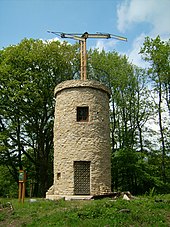History of radio § Broadcasting
Radio and television
Starting in 1894, Italian inventor Guglielmo
Marconi began developing a wireless communication using the then newly
discovered phenomenon of radio waves, showing by 1901 that they could be
transmitted across the Atlantic Ocean. This was the start of wireless
telegraphy by radio. Voice and music were demonstrated in 1900 and 1906,
but had little early success. World
War accelerated the development of radio for military communication. After
the war, commercial radio AM broadcasting began in the 1920s and became
an important mass medium for entertainment and news. World War II again
accelerated development of radio for the wartime purposes of aircraft and land
communication, radio navigation and radar. Development of stereo FM
broadcasting of radio took place from the 1930s on-wards in the United States
and displaced AM as the dominant commercial standard by the 1960s, and by the
1970s in the United Kingdom.
On 25 March 1925, John Logie Baird was able to demonstrate
the transmission of moving pictures at the London department store Selfridges.
Baird's device relied upon the Nipkow disk and thus became known as
the mechanical television. It formed the basis of experimental broadcasts
done by the British Broadcasting Corporation beginning 30 September
1929.However, for most of the twentieth century televisions depended upon
the cathode ray tube invented by Karl Braun. The first version
of such a television to show promise was produced by Philo Farnsworth and
demonstrated to his family on 7 September 1927. After World War II,
the experiments in television that had been interrupted were resumed, and it
also became an important home entertainment broadcast medium.




Comments
Post a Comment